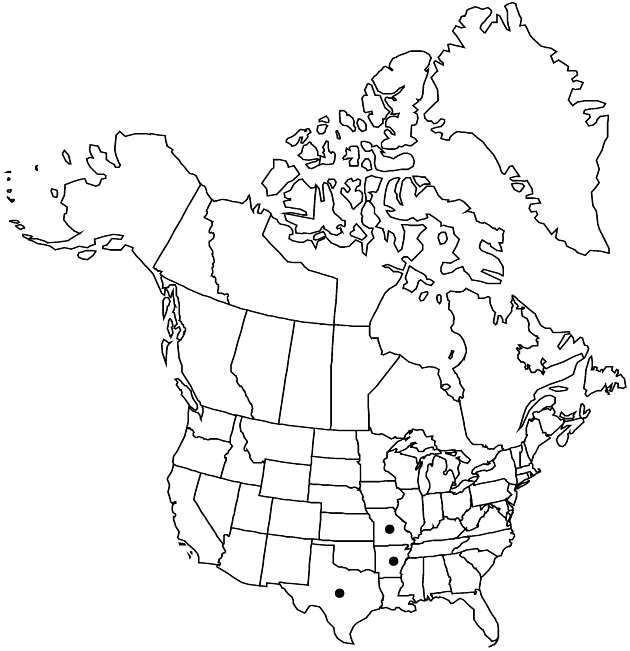Palafoxia callosa
Fl. N. Amer. 2: 369. 1842.
Basionym: Stevia callosa Nuttall J. Acad. Nat. Sci. Philadelphia 2: 121. 1821
Annuals, 20–60 cm. Stems scabrous to glabrate, not stipitate-glandular. Leaf blades linear, 20–70 × 1–4 mm. Involucres ± turbinate. Phyllaries 3–5 × 1+ mm, ± equal, ± strigillose, not stipitate-glandular. Ray florets 0. Disc florets 5–30; corollas actinomorphic, 5–6 mm, throats ± funnelform, shorter than lobes. Cypselae 3–5 mm; pappus scales of inner cypselae 0.3–1 mm. 2n = 20.
Phenology: Flowering summer–fall.
Habitat: Rocky, calcareous soils
Elevation: 50–300 m
Distribution

Ark., Mo., Tex., Mexico (Coahuila).
Discussion
Some depauperate specimens of Palafoxia rosea (e.g., Oklahoma, Beckham Co., 17 Oct 1936, Eskero 1502, US) closely resemble P. callosa.
Selected References
None.
Lower Taxa
None.